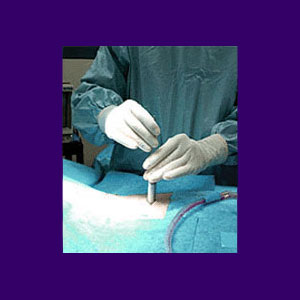
Endoscopic spine surgery is one of the many different approaches to providing less invasive operative care for back pain sufferers. Minimally invasive back surgery has become the general rule when discussing spinal procedures, since the days of fully open surgical techniques are mostly a remnant of medical history.
Endoscopic versions are available for almost every form of spinal operation. However, a few techniques may still require some degree of traditional open surgery. When at all possible, demand the least invasive type of procedure possible to increase your chances of a fast and successful recovery and minimize your chances of suffering from a serious spinal complication.
This dialog focuses on the use of endoscopic technologies in the back surgery arena and the benefits provided to treated patients.
What is Endoscopic Spine Surgery?
An endoscope is a specialized medical tool which allows doctors to look into the body, and even perform complex surgical techniques, without having to open large incisions to access the interior of the anatomy. The endoscope can be placed precisely through multiple smaller incisions, which means no large surgical cuts, no muscular dissection and no huge gaping wounds to heal.
The advancement of endoscopic back surgery has allowed patients to recover faster than ever before, achieve better results and have significantly less pain after the operation.
Endoscopic procedures cut down on the risk of infection and the build-up of scar tissue, which is known to be problematic after many surgical interventions.
Endoscopic Back Surgery Facts
There are a great variety of endoscopic procedures used on the spine. The exact operation selected will depend on the diagnosed source of pain and the particulars of the patient’s anatomy.
Endoscopic surgery is often combined with other revolutionary types of procedures, including laser spine surgery. The use of high-tech devices, such as live visual enhancement, allow surgeons to see the spinal anatomy in incredible detail, facilitating more accurate procedures and hopefully providing better curative results.
Endoscopic surgery is the rule of thumb in countries with developed medical systems, but may be unavailable in third world nations or those with inadequate medical infrastructure or updated care providers.
Endoscopic Spine Surgery Factsheet
Just remember that although endoscopic surgery is better in most cases than fully open operative interventions, it is still surgery and has many risks. Additionally, most back surgery procedures are not needed to begin with and the majority will not cure the pain either immediately or eventually.
Many surgical patients regret undergoing their operations, regardless of the type of procedure and approach utilized, since they still suffer from their symptoms post-surgery and are now often limited physically or even permanently damaged by the procedure.
Always save any operation as a last resort back pain treatment and only consider the possibility for surgical resolution if you are 100% sure of the validity of the diagnostic theory in place. That being said, if you truly need or want surgery, be sure to discuss your options with at least 3 or more different doctors. There are many approaches to care and a variety of procedures used to treat all major spinal diagnoses. Just because one surgeon advised a particular path to treatment does not mean it is the best choice. It may just be the only option offered by that surgeon or the one which will make them the most money.
Get the big picture before making any decision. Pursue a second opinion or two and then find the procedure which will best resolve your problematic condition with the least damage caused to your anatomy. Endoscopic spinal surgery may be the way to go.




